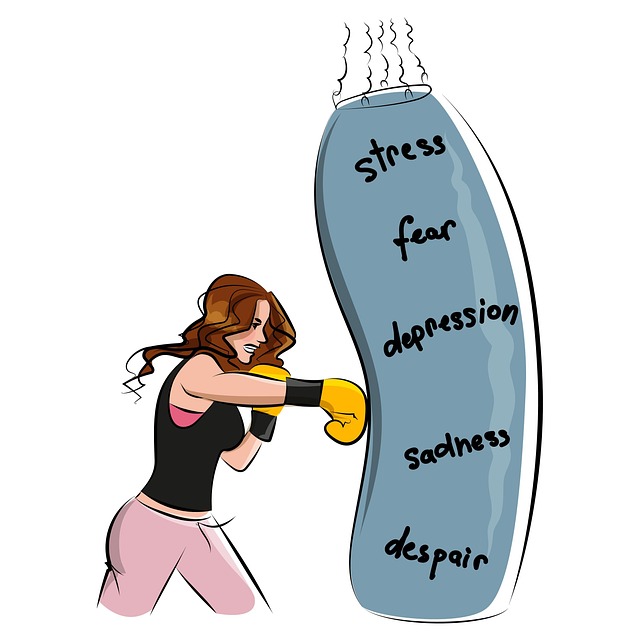Greenwood Village Bipolar Disorder Therapy, a niche mental wellness app, targets individuals with bipolar disorder. It offers personalized tools and resources, emphasizing community and empowerment. With strategic marketing on digital platforms and influencer partnerships, the app reaches its audience effectively. Success is measured through KPIs like user retention and module completion rates, ensuring continuous improvement. Cultural sensitivity and user feedback ensure a reliable crisis intervention resource for Greenwood Village residents.
In today’s digital age, mental wellness apps are revolutionizing access to support. For conditions like bipolar disorder, targeted marketing strategies are crucial to connect users with effective solutions. This article explores a comprehensive marketing approach for a hypothetical app, Greenwood Village Bipolar Disorder Therapy, focusing on understanding diverse user needs, crafting compelling value propositions, and leveraging effective channels. By exploring these elements, we aim to enhance accessibility and improve user engagement, making mental health resources more accessible than ever.
- Understanding Target Audience: Bipolar Disorder and Beyond
- Crafting a Unique Value Proposition for Greenwood Village Bipolar Disorder Therapy App
- Marketing Channels and Strategies to Reach the Right Users
- Measuring Success and User Engagement for Mental Wellness Apps
Understanding Target Audience: Bipolar Disorder and Beyond

In developing a marketing strategy for a mental wellness app, it’s crucial to start by understanding the unique needs and challenges of your target audience. One such demographic that deserves focused attention is individuals dealing with bipolar disorder, a condition characterized by extreme mood swings. Greenwood Village Bipolar Disorder Therapy can serve as a powerful SEO keyword, guiding users seeking specialized support. This strategy acknowledges the complexity of bipolar disorder, which often co-occurs with other mental health issues like depression and anxiety. By addressing these comorbidities, the app can position itself as an all-encompassing solution for holistic emotional healing processes.
Furthermore, marketing efforts should emphasize the app’s role in promoting self-esteem improvement, a vital aspect of bipolar disorder management. Targeted content that highlights success stories or offers practical tips on navigating mood episodes can resonate deeply with users. Incorporating keywords like “Depression Prevention” and focusing on building resilience against emotional setbacks will appeal to those seeking proactive mental wellness tools. This tailored approach ensures the app’s marketing resonates with its intended audience, fostering a sense of community and empowerment in their emotional healing journeys.
Crafting a Unique Value Proposition for Greenwood Village Bipolar Disorder Therapy App

In the competitive landscape of mental wellness apps, Greenwood Village Bipolar Disorder Therapy must stand out with a compelling unique value proposition. This app’s primary focus on managing and treating bipolar disorder sets it apart from general wellness platforms. By specializing in this specific mental health condition, Greenwood Village offers targeted support that goes beyond generic stress reduction methods. It provides personalized tools and resources tailored to the unique needs of individuals dealing with bipolar disorder, helping them navigate mood episodes and stabilize their symptoms effectively.
The app’s value isn’t just about offering self-care practices; it’s about empowering users with evidence-based strategies to manage a complex condition. Through advanced risk assessment features, mental health professionals can proactively identify individuals at higher risk of bipolar disorder exacerbation or suicide attempts, enabling early interventions and improved patient outcomes. This proactive approach positions Greenwood Village Bipolar Disorder Therapy as not just a self-care tool but a critical ally in the hands of mental health professionals for comprehensive risk assessment.
Marketing Channels and Strategies to Reach the Right Users

Reaching the right users for a mental wellness app is paramount, especially when targeting conditions like bipolar disorder in Greenwood Village. Marketing channels should include digital platforms frequented by individuals seeking therapy and self-care resources. Social media, particularly Instagram and Facebook, offers targeted advertising capabilities based on demographics and interests, allowing for precise user selection. Influencer partnerships with mental health advocates can also effectively raise awareness among their engaged followers.
Incorporating a content marketing strategy is another powerful approach. Creating blog posts, videos, and podcasts that offer valuable insights into managing bipolar disorder and related topics (like Risk Management Planning for Mental Health Professionals) positions the app as an educational resource. Collaborative webinars with healthcare providers and mental health organizations further enhance credibility and reach. Additionally, leveraging online communities and forums dedicated to self-care practices can tap into a ready audience interested in mental wellness solutions.
Measuring Success and User Engagement for Mental Wellness Apps

Measuring success and user engagement for mental wellness apps is a multifaceted process that goes beyond mere downloads or active users. For apps like Greenwood Village Bipolar Disorder Therapy, tracking key performance indicators (KPIs) such as user retention rates, session duration, and completion of therapeutic modules offers valuable insights into the app’s effectiveness. By analyzing these metrics, developers can identify areas for improvement and tailor content to better support users’ emotional healing processes.
Cultural sensitivity in mental healthcare practice is another critical aspect to consider during engagement assessments. Apps should be designed with an understanding of diverse cultural backgrounds and incorporate crisis intervention guidance tailored to specific communities. Regular user feedback and sentiment analysis can help gauge the app’s ability to address these nuances, ensuring that it remains a reliable resource for mental wellness support.
In developing a marketing strategy for mental wellness apps, particularly focusing on the Greenwood Village Bipolar Disorder Therapy app, understanding the target audience is key. By recognizing and addressing the specific needs of individuals with bipolar disorder, this app offers a unique value proposition. Utilizing targeted marketing channels and strategies, such as social media, content marketing, and collaborations with mental health influencers, ensures reaching the right users. Measuring success involves tracking user engagement metrics, app downloads, and positive reviews, ultimately fostering a community that promotes mental wellness and empowers those living with bipolar disorder.











